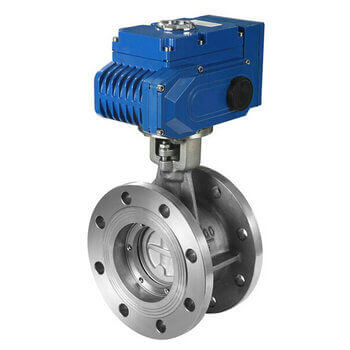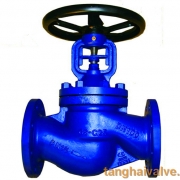How to select electric actuator of the electric regulating butterfly valve
The valve electric actuator is an important driving force of the electric regulating butterfly valve, and its selection determines the actual on-site operation of the product. At the same time, the selection of electric actuators has some own selection criteria. Mainly from the operating torque, host structure, output shaft rotation, output speed, etc. to consider, more detailed principles will be shared below:
1. The operating torque is an important parameter for selecting the valve electric device. The output torque of the electric actuator should be 1.2 to 1.5 times the larger operating torque of the valve.

D943H-16C-metal seated stainless steel electric triple offset butterfly valve
2. The main structure of the valve electric device is divided into two types: without thrust plate and with thrust plate. The main difference between the two is whether the torque is directly output or converted by the stem nut in the thrust plate.
3. The number of rotations of the output shaft is related to the nominal diameter of the valve, the pitch of the stem, and the number of thread heads. The total number of rotations that the electric device should meet = valve opening height/stem thread head number X valve Rod drive thread pitch.
4. The diameter of the optional valve stem must be allowed to pass by the electric device. That is to say, the inner diameter of the hollow output shaft of the electric device must be larger than the outer diameter of the stem of the rising stem valve. At the same time, in order to ensure that the electric regulating butterfly valve can work normally after assembly, the diameter of the valve stem and the size of the keyway need to be selected appropriately.
5. The output speed needs to be appropriate. If the opening and closing speed of the valve is too fast, water hammer is likely to occur. So choose according to the usage.
The above are the problems that need to be paid attention to in the selection of the electric valve electric actuator of the electric regulating butterfly valve. In terms of packaging and transportation, there are also some points to pay attention to regarding valve electrical equipment. First of all, the packaging of electrical equipment such as valve electric actuators should be protected from rain, moisture, and dust, and the packaging should be firm and reliable. After receiving the goods, they should be installed immediately. If it needs to be placed for a period of time, the storage environment should be kept ventilated and dry, and it should not be stored in the open air. At the same time, it is forbidden to carry out debugging and maintenance on cloudy and rainy days. After the pressure test is completed, re-tighten all the firmware to ensure that the electrical part is tightly sealed to prevent corrosion loss and affect later use.
The valve electric actuator of the electric regulating butterfly valve is an indispensable device for the realization of valve program control, automatic control and remote control. Its movement process is controlled by the stroke, torque or axial thrust. The correct selection of valve electric devices is essential to prevent overload. For more information about electric butterfly valves, please consult the online customer service of Tanghai Valve’s official platform. You are welcome to visit and purchase.
TH Valve is a professional manufacturer of butterfly valve, gate valve, check valve, globe valve, knife gate valve, ball valve with API, JIS, DIN standard, used in Oil, Gas, Marine industry, Water supply and drainage, fire fighting, shipbuilding, water treatment and other systems, with Nominal Diameter of DN50 to DN1200, NBR/EPDM/VITON, Certificates & Approvals: DNV-GL, Lloyds, DNV, BV, API, ABS, CCS. Standards: EN 593, API609, API6D
Related news/knowledge:
Comparison of pneumatic actuator, electric actuator and hydraulic actuator
Valve actuator / actuation -(3)-classifications
Is it better to install gate valve or ball valve next to regulating valve?
Installation instructions for ball valves

 tanghaivalve.com
tanghaivalve.com

 © Copyright 2020 Tianjin Tanghaidongyang Valve Co., Ltd. All Rights Reserved.
© Copyright 2020 Tianjin Tanghaidongyang Valve Co., Ltd. All Rights Reserved.